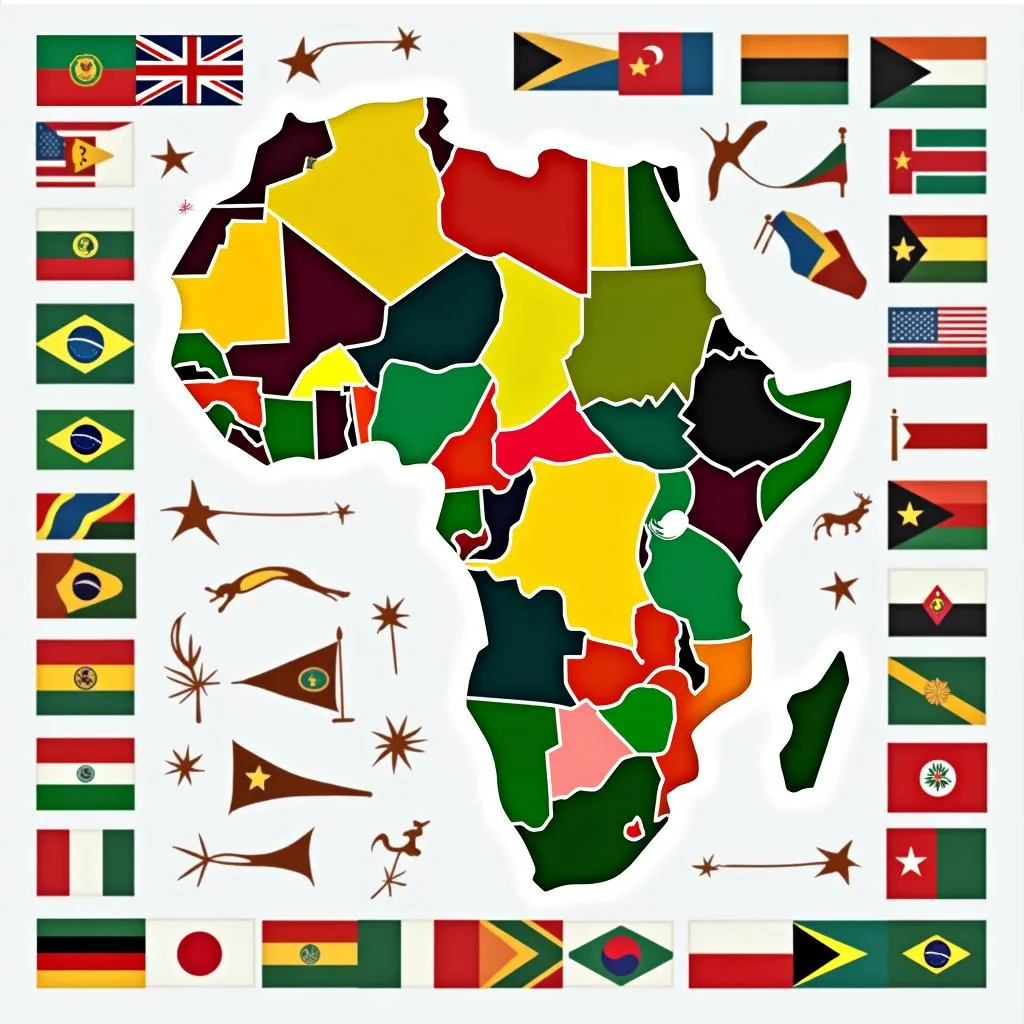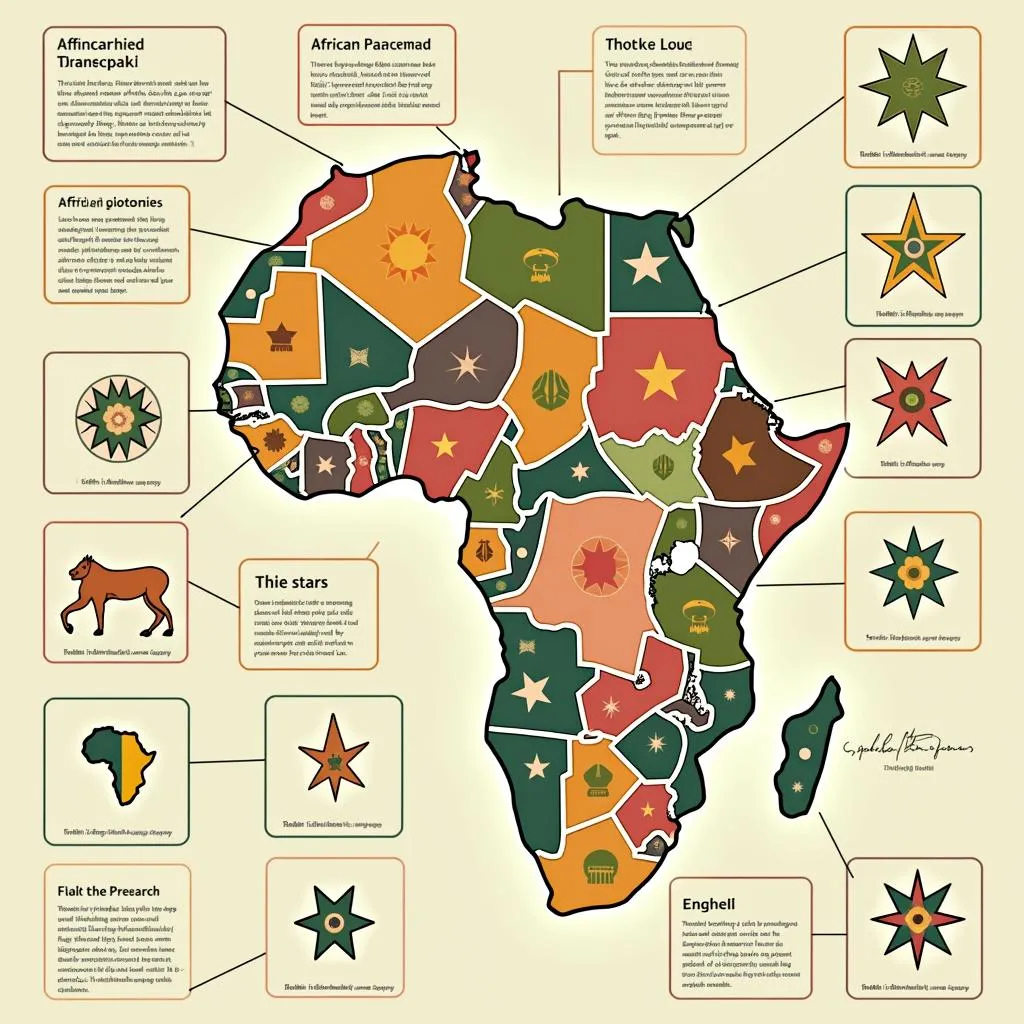Exploring the Rich Tapestry of Africa: A Visual Guide to African Countries Flags and Images
Welcome to a journey through the vibrant continent of Africa, where each nation proudly displays its unique identity through its flag. From the iconic colors and symbols to the fascinating stories behind their creation, African country flags offer a glimpse into the rich history, culture, and aspirations of each nation. Let’s delve into the visual world of African flags and discover the intriguing narratives they hold.
A Colorful Spectrum of National Pride
Africa is a continent of immense diversity, and this diversity is beautifully reflected in its national flags. Each flag is a symbol of unity, independence, and cultural heritage, capturing the spirit of its people.
 The Diverse Flags of Africa
The Diverse Flags of Africa
The Meaning Behind the Colors and Symbols
Every element within a flag holds significance, conveying messages of history, beliefs, and aspirations.
The Pan-African Colors:
- Red: Symbolizes the blood shed for freedom and independence, representing the struggle against colonialism.
- Black: Represents the African people, their strength, and resilience.
- Green: Represents the land, hope, and prosperity of the continent.
- Yellow/Gold: Often represents the wealth, minerals, and future promise of Africa.
Common Symbols:
- Stars: Often signify hope, unity, and guidance for the future.
- Sun: Represents life, energy, and the rising of a new era.
- Animals: Symbolic of strength, courage, and cultural significance.
- Geometric Patterns: Often represent traditional art, culture, or specific historical events.
Unveiling the Stories Behind the Flags
Each African country flag has a unique story to tell, reflecting historical events, cultural beliefs, and political ideologies. Let’s explore a few examples:
South Africa:
The South African flag, adopted in 1994, is a symbol of reconciliation and unity after the apartheid era. The colors—black, gold, green, red, white, and blue—represent the diverse racial and cultural groups of the country, while the Y-shaped design represents the convergence of different cultures coming together.
Ethiopia:
The Ethiopian flag, one of the oldest national flags in the world, features three equal horizontal bands of green, yellow, and red, representing the country’s landscape, prosperity, and the blood of its people, respectively. The blue star in the center symbolizes peace and unity.
Ghana:
The Ghanaian flag, adopted in 1957, features a black star on a red, yellow, and green background. The black star represents the people of Ghana, while the red symbolizes the blood shed for freedom, yellow represents the country’s mineral wealth, and green represents the country’s agricultural abundance.
Embracing the Visual Language of Africa
African country flags are more than just pieces of fabric; they are visual representations of national identity, cultural heritage, and aspirations. By understanding the meaning behind the colors, symbols, and stories, we gain a deeper appreciation for the richness and diversity of the African continent.
 The Significance of Symbols in African Flags
The Significance of Symbols in African Flags
Exploring African Flags Through Images
The internet offers a vast collection of resources for exploring the visual world of African country flags. Websites, blogs, and social media platforms dedicated to Africa often feature images of flags, providing information about their history, symbolism, and cultural significance.
 Discover African Flags Online
Discover African Flags Online
Frequently Asked Questions
Q1. What is the most common color found on African country flags?
A1: Red is a prominent color in many African country flags, representing the blood shed for freedom and independence.
Q2. What is the significance of the star on many African flags?
A2: The star on African flags often symbolizes hope, unity, and guidance for the future.
Q3. How can I learn more about the specific history and symbolism of a particular African country flag?
A3: You can find detailed information on websites, blogs, and academic resources dedicated to the history and culture of specific countries.
Q4. Are there any African countries that have changed their flags over time?
A4: Yes, many African countries have updated their flags since gaining independence, often reflecting changes in their political ideologies and national identity.
Q5. What are some of the most visually striking African country flags?
A5: Each African flag has its own unique beauty. Some notable examples include the flags of South Africa, Ethiopia, Ghana, and Botswana.
Explore the Visual Identity of Africa
As you delve into the visual world of African flags, you’ll gain a deeper understanding of the continent’s rich history, vibrant cultures, and diverse aspirations. Each flag tells a story, offering a unique glimpse into the soul of a nation.
